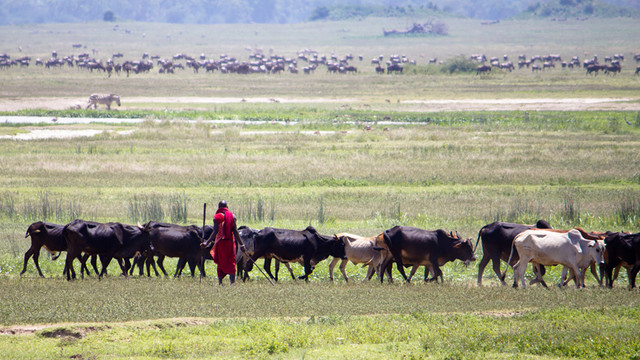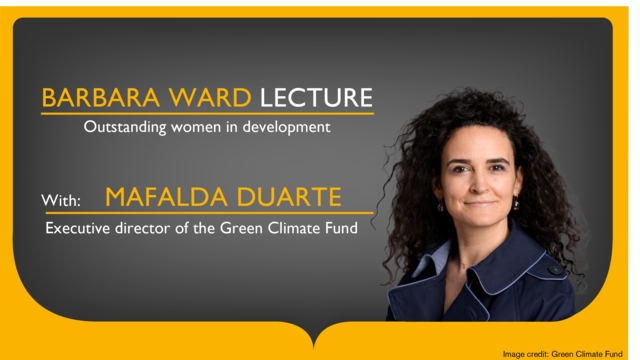The Green Climate Fund: time to shift focus to locally led adaptation
The board of the Green Climate Fund, meeting this week to review proposals for the next round of funding, needs to consider how it can better channel funds directly to countries – helping build stronger national and local accredited entities that can support adaptation initiatives led by local actors.


Climate change has affected thousands of people in Mozambique, who depend on rain-fed subsistence agriculture (Photo: DFID via Flickr, CC BY-NC-ND 2.0)
This week, the board of the Green Climate Fund (GCF) will meet to consider 15 funding proposals, totalling US$873.9 million. Twelve proposals are from international entities (UNDP, IUCN, GIZ, FAO, AFD, EBRD and the World Bank) with only three coming from direct access entities (DAE) – entities through which GCF money can be channelled directly to countries.
This snapshot is an accurate reflection of the GCF’s overall portfolio, where only $795 million (15% of GCF funding) flows via 18 DAEs across just 27 (of 128) GCF projects. There are only eight least developed countries (LDC) DAEs leading GCF-financed adaptation projects.
GCF entities are accredited based on three criteria: the size of project they can manage, fiduciary standards governing the types of finance they can administer, and the level of environmental and social risk they are approved to manage.
These criteria put the LDCs at a clear disadvantage. Very few LDC DAEs have fiduciary standards robust enough to administer loans or grants. This leaves them with little scope to finance adaptation initiatives led by local actors, people and communities.
To adapt effectively to the escalating impacts of climate change, LDC countries need capable national and local institutions (particularly national and local government authorities) that can deliver more flexible and tailored finance into the hands of local level actors.
COVID-19 has laid bare the need for in-country institutions that can take on significant financial and management responsibilities, and that are agile enough to respond and adapt.
The GCF recognises its shortfall in building the capabilities of LDC institutions through DAEs – and is trying to address some of the issues through the following entry points.
Entry points
Simplified Approval Process (SAP): The SAP modality, operational since October 2017, seeks to reduce the time and effort of the proposal process for small-scale activities (those requesting funding of up to $10 million).
Yet it is international entities such as the World Bank, UNDP and IUCN that have capitalised on the SAP’s simpler access modalities. Global agencies have a clear advantage here, often with dedicated and coordinated resources for proposal development.
Indeed, two of the three SAP proposals under consideration at this week’s meeting are from international entities. This only serves to make GCF finance easier to access for already capable institutional organisations, rather than building more agile national and local institutions that can help the most vulnerable people and places manage escalating climate risks.
Readiness and preparatory support programme (RPSP): The RPSP is the GCF’s dedicated readiness financing for strengthening National Dedicated Authorities and DAEs and supporting them to undertake adaptation planning activities and develop country programmes and pipelines. The RPSP supports DAEs to build their project pipelines before they access funding for project implementation – something that the GCF has taken for granted until now.
The RPSP is still learning how to provide better support, and DAEs have reported substantial obstacles such as the rigid rules that prevent them from implementing activities effectively and in a timely manner (PDF). DAEs need more flexibility to adjust or modify funding and activities as the need arises, based on sound information and emerging issues to provide relevant and effective readiness support. Such issues are still being worked out.
Being prepared to fail – and ready to learn
Failure to find ways to channel more money directly to countries that could strengthen local and national institutions perhaps reflects the GCF’s low risk appetite, and pressure to get funding out the door.
Putting funding decisions into the hands of national and local actors that are still building their capabilities may well, on occasion, fail to bring the hoped-for returns. But channelling funds directly to countries who need it most must be a process of learning from doing: learning from experiences and sharing with peers is critical for advancing and refining the process.
COVID-19: an opportunity to rethink
COVID-19 has changed our world and is forcing funding mechanisms and development programmes to rethink their ways of working. The need to empower institutions that can deliver locally led action based on principles of subsidiarity, empowerment, downward accountability, and agility is starker than ever.
Under the LDC Group’s LIFE-AR initiative, LDCs are taking the lead on shifting to locally relevant, self-determined and well-integrated climate finance systems that work for their long-term low-carbon climate-resilient development visions; the Global Commission on Adaptation’s Locally Led Action Track is working with funders and intermediary institutions to expand financial resource availability to local governments, community-based organisations, and other local actors; and the ADB’s Community Resilience Partnership Programme is seeking to support governments in the Asia-Pacific region to build their capabilities prior to implementation phases – strengthening and empowering these institutions to deliver and scale up effective adaptation interventions.
The GCF has the opportunity to learn from the experiences of these initiatives and break from business as usual. Is this the moment for a rethink?
IIED has been examining the climate finance landscape, comparing emerging good practice for supporting locally led adaptation against how international climate finance is being delivered. Our recent briefing paper includes recommendations on how the GCF and other climate funds can strengthen their adaptation support to LDCs.


